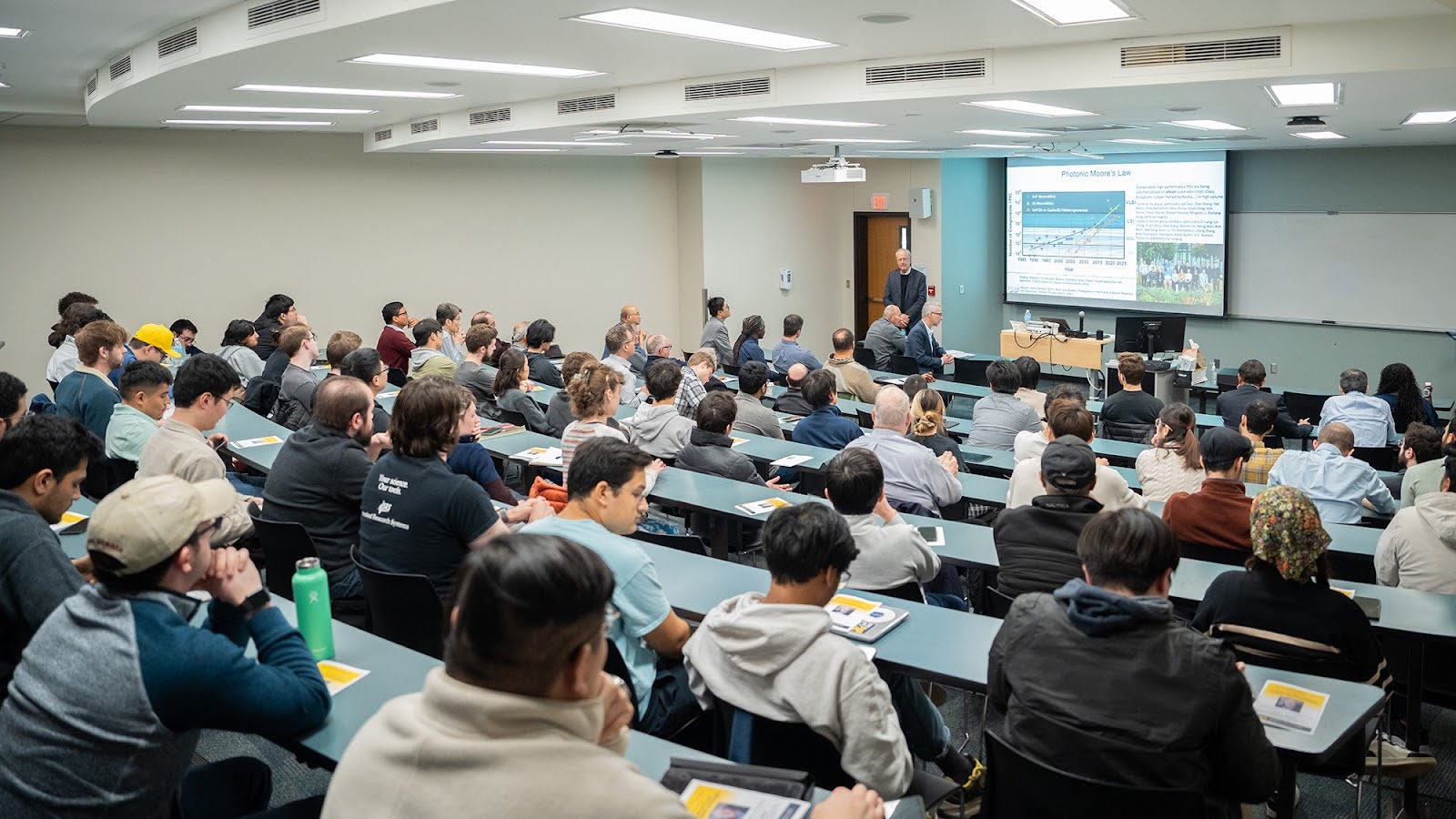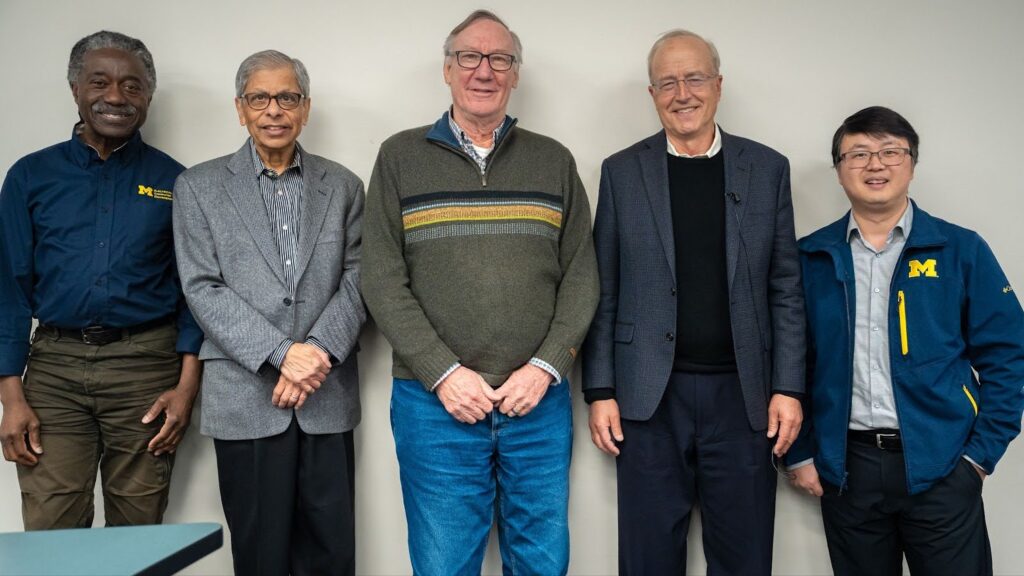John Bowers honored with 23rd William Gould Dow Distinguished Lectureship

Bowers gave an overview of historical and current research on integrating silicon photonics and lasers into circuits.
John Bowers, entrepreneur and professor in the Department of Electrical and Computer Engineering and the Department of Materials at the University of California, Santa Barbara, received the 23rd William Gould Dow Distinguished Lectureship. He visited North Campus to give his lecture, “Silicon Photonic Integrated Circuits with Integrated Lasers,” on April 11, 2025.
“Silicon photonics is still growing really rapidly as a field,” said Bowers, Director of the Institute for Energy Efficiency. “The demand of AI on data centers is growing much faster than the performance of our computing and memory chips. That means we need to get many more lanes of ‘traffic’ onto these chips. That basically drives photonic integration.”
Silicon photonics involves the transfer of information via light rather than electricity. One big goal of the field today, Bowers explained, is replacing traditional copper with fiber optics. Bowers focused his talk on integrating lasers into chips, which can reduce the costs of applications including data- and telecommunications, lidar, artificial and virtual reality, optical and quantum computing, and biosensing.
One challenge of this work is integrating the optical fibers and lasers into the chip, inside its packaging. Traditionally, this has caused issues with chips overheating. In recent years, liquid cooling technology has allowed the lasers to be integrated into packaged chips while maintaining a stable temperature—allowing for a 32-fold increase of chip efficiency in just four years.
Using a silicon laser isn’t efficient enough in itself, Bowers said; instead, researchers focus on integrating other materials onto silicon chips. The technology is moving from using off-chip lasers to hybrid, heterogeneous, and monolithic integration.
Bowers gave an overview of the technology being used at Intel, much of which his research group developed. He has also created two spinoff companies from his research: Quintessent and Nexus Photonics.
His current work focuses on integrating quantum dot lasers on silicon chips.
“I would argue that if you’re going to grow lasers on silicon, that they’re going to have to be quantum dot,” said Bowers. “People have been growing lasers on silicon since I was at Bell Labs in the 80s, and even now the world record for the lifetime of a quantum well laser is 400 hours. With quantum dots at room temperature, we’ve observed lifetimes of up to 100 million hours.”
“Sandia National Laboratories has been irradiating our quantum-melt lasers with neutrons and gamma rays for space and nuclear applications, and they’re about 10 times better than the best quantum-melt lasers that they can buy.”
Bowers earned his MS and PhD from Stanford University. He worked for AT&T Bell Laboratories before joining the University of California, Santa Barbara as a faculty member. He adds the Dow Lectureship—the highest honor bestowed by the U-M EECS Department—to his many awards and recognitions, including the IEEE Photonics Award, the OSA/IEEE Tyndall Award, the IEEE LEOS William Streifer Award, and the South Coast Business and Technology Entrepreneur of the Year Award. He is an IEEE Fellow and a member of the National Academy of Engineering and the National Academy of Inventors.
Over the years of his distinguished career, Bowers has collaborated with many well-known U-M Electrical and Computer Engineering researchers, including Herbert Winful (Joseph E. and Ann P. Rowe Professor of EE and Arthur F. Thurnau Professor of EECS), Pallab Bhattacharya (Charles M. Vest Distinguished University Professor Emeritus of EECS and James R. Mellor Professor Emeritus of Engineering), Stephen Forrest (Peter A. Franken Distinguished University Professor of EE and Paul G. Goebel Professor of Engineering), and Professor Di Liang.
“John has been a mentor, friend, and inspiration for me for 20 years,” said Liang, “so it’s my great honor to have him here for the William Gould Dow Distinguished Lectureship.”
